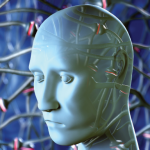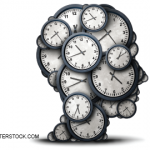(Reuters Health)—Burnout among U.S. doctors is becoming more common and now affects more than half of practicing physicians, according to a new study.¹
About 54% of U.S. doctors experienced at least one symptom of burnout in 2014, compared to about 46% in 2011, researchers report in Mayo Clinic Proceedings.
Overall, the researchers found that doctors are about twice as likely to experience burnout as the average U.S. worker.
“Things are unfortunately getting worse for physicians,” says lead author Dr. Tait Shanafelt, of the Mayo Clinic in Rochester, Minnesota.
Through a partnership with the American Medical Association (AMA), the researchers invited nearly 36,000 U.S. doctors to take a survey in 2014 and compared the responses to a similar survey from 2011.
Of the 6,880 doctors who responded to the 2014 survey, about 47% reported high emotional exhaustion, about 35% felt depersonalized or saw less value in their work, and about 16% felt a low level of personal accomplishment.
Burnout rates varied between specialties, with rates topping 60% among doctors in emergency medicine, family medicine, urology, rehabilitation and radiology.
Doctors working in urology, rehabilitation, family medicine, radiology, orthopedic surgery, dermatology, internal medicine, general surgery, pathology, psychiatry and general pediatrics all saw significant increases in burnout rates between 2011 and 2014.
Despite no increase in the number of hours worked, only 41% of respondents were satisfied with the balance between their work and personal lives, down from about 49% in 2011.
In an editorial, Dan Ariely and Dr. William Lanier of Duke University in Durham, N.C., pointed to three main psychological issues in the workplace that likely undermine doctors’ wellbeing: loss of autonomy, mental exhaustion and “asymmetrical rewards”—meaning that success is barely acknowledged while mistakes come with heavy punishments.
Shanafelt also pointed to doctors’ heavier workloads and increased clerical responsibilities as examples of potential frustrations.
“I think we are still in the early days of electronic health records, patient portals, computerized order entry and there is the potential this can become more efficient and there can be more efficient ways for their implementation,” he says.
The study team notes that 75% of doctors now work for large healthcare organizations, and meaningful progress toward turning around burnout rates will require work by doctors and their organizations.
Dr. Mark Linzer, of Hennepin County Medical Center in Minneapolis, says the focus needs to be on healthcare systems to answer the problem of physician burnout.
Specifically, he tells Reuters Health, healthcare systems need to assess their work environments by measuring time pressures, chaos, lack of control and alignment of values between doctors and leaders.
Linzer pointed to the AMA’s Preventing Physician Burnout module, which provides steps to prevent burnout, a survey to assist in assessing burnout and examples of successful burnout-prevention programs.
At Linzer’s own medical center, the AMA module highlights scheduling changes to allow doctors, who are also parents, to leave on time, and environmental changes—like new carpets and art—as success stories.
“It’s gratifying to see people start picking up on the idea that burnout can be measured and addressed and changes can be made that are not exorbitantly expensive,” he says. “The payoff can be quite rapid.”
In the case of installing new carpets and artwork in the general internal medicine department at his medical center, the AMA module shows satisfaction in the department increased from 65% in 2013 to 83% a year later. Burnout was also cut by more than half over the same time period.
Linzer also said his research shows that healthcare systems with higher burnout rates provide less quality care to their patients.
He tells Reuters Health that patients can help address doctor burnout by encouraging healthcare systems to assess their work environments. This can include measuring time pressures, chaos, lack of control and alignment of values between doctors and leaders.
“Although not the focus of this study, we’ve shown in several other studies that burnout in physicians increases the risk of medical errors and increases the risk that physicians will cut their clinical work hours,” Shanafelt says.
He says some systems have made initial progress by providing doctors with assistants and lightening the load of clerical tasks.
“I think we have some innovative centers at the vanguard, but I think the saturation of how that’s being pursued is limited,” he says.
Reference
- Shanafelt TD, Hasan O, Dyrbye LN, et al. Changes in burnout and satisfaction with work-life balance in physicians and the general U.S. working population between 2011 and 2014. Mayo Clinic Proceedings. 2015 Dec;90(12):1,600–1,613


